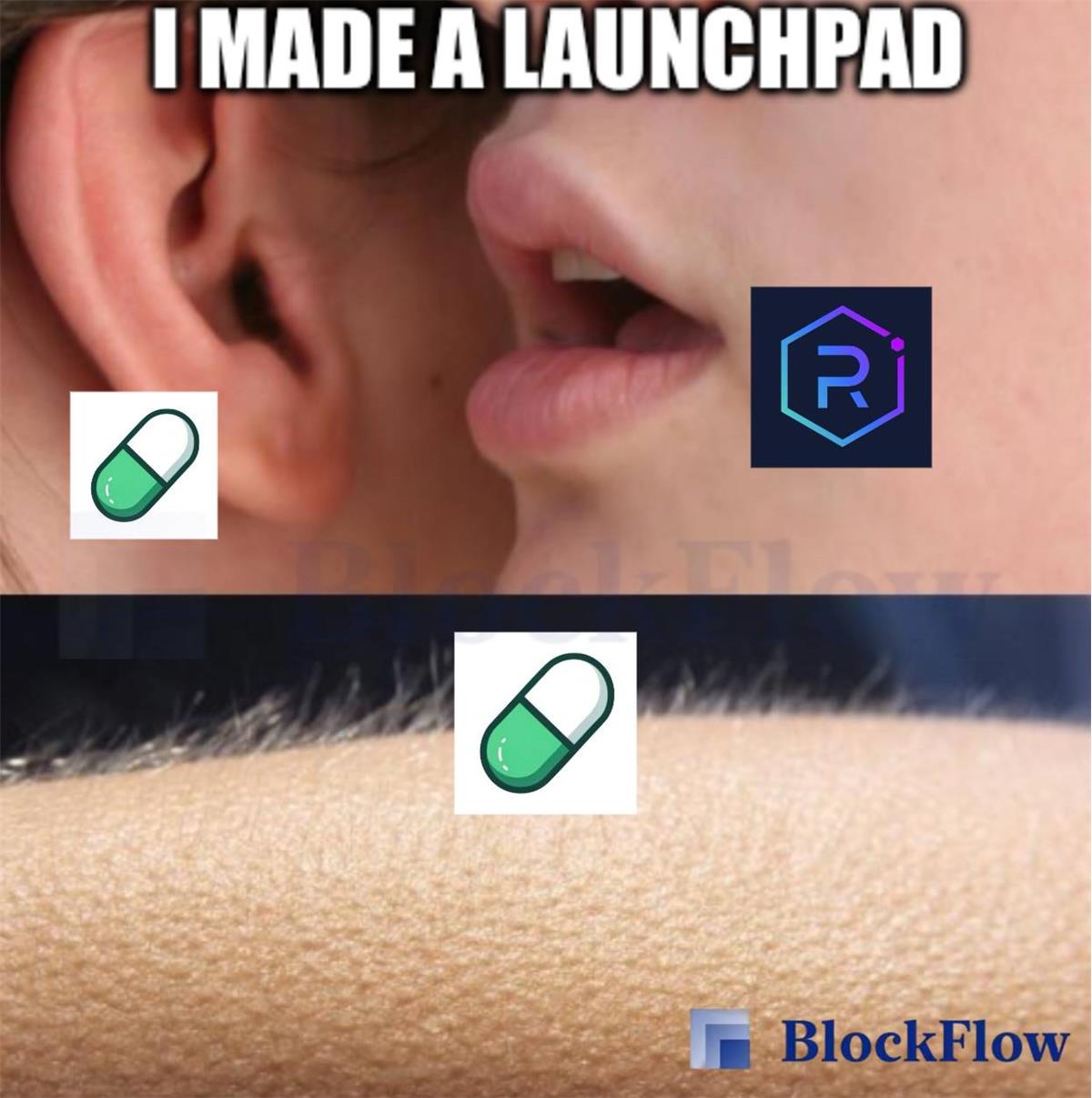If you’re asking this question, it’s obvious that BSC has been one of the few hotspots on-chain recently.
As CZ and Yi He increase their Twitter activity, their strategy of capturing attention and creating memes is becoming increasingly apparent. Simultaneously, by leveraging Binance APP's powerful secondary traffic capabilities and integrating Binance Alpha directly into the application, they've generated even more excitement around meme token trading.
In a generally bearish market, BSC appears to have gained the upper hand, effectively capturing on-chain momentum that previously belonged to Solana.Traffic and transaction fee revenue remain the primary concerns and desires of every blockchain.
Under such business pressures, competition between different chains is inevitable, but protocols on the same chain are also competing against each other.
For instance, Pump.fun and Raydium have each launched clones of the other's core products.

Pump.fun Enters AMM
About 20 days ago, Pump.fun began encroaching on Raydium's business by launching its own AMM pools, attempting to divert liquidity revenue that originally belonged to Raydium.
(For more details, see: “Pump.fun Launches Its Own AMM Pools? A Clear Bid to Steal Raydium’s Revenue”)
Under the current model, users' transactions are first matched internally within Pump.fun's platform using its own liquidity. When internal liquidity is exhausted, trades are routed to external pools, which in this case rely on Raydium's liquidity pools.
In this arrangement, Pump.fun has served as a "traffic provider" for Raydium but has also been constrained by Raydium's rules. Whenever transactions flow to external pools, Pump.fun must pay a portion of the transaction fees, which ultimately go to Raydium's liquidity providers (LPs). Currently, Raydium charges a 0.25% fee on every transaction.
The motivation behind this move is straightforward: essentially, Pump.fun, as the traffic gateway, hasn't been able to fully capitalize on the revenue generated by its traffic.
As we pointed out before, in a bearish market environment, it’s not just retail investors engaging in PvP (player vs. player); projects are also locked in fierce battles, competing against each other for survival.
Raydium Launches a Launchpad
Today, Raydium’s counteroffensive strategy has emerged.
According to a report by Blockworks, Raydium is launching a token launchpad called "LaunchLab," which is essentially a direct fork of Pump.fun.
Although Raydium’s official Twitter account hasn’t explicitly mentioned this development, the saying “where there’s smoke, there’s fire” applies here. This move suggests that the tacit cooperation between Raydium and Pump.fun is gradually breaking down.
From an observer’s perspective, the sentiment is clear: “If you’re taking my business, then I’ll take yours.”
Raydium’s motivation is equally straightforward. As a backend liquidity provider, why not go one step further and capture the front-end traffic as well?
But taking someone else's business requires capability.
For a token launchpad like Pump.fun, replicating a similar and relatively simple product doesn’t necessarily require technical prowess – it’s all about funding.
Reports further indicate that Raydium still has approximately $168 million on its balance sheet, providing substantial financial backing to clone Pump.fun's business model through investments in both talent and resources.
In an interview with Blockworks, an anonymous Raydium core contributor indirectly confirmed this: "The protocol began developing LaunchLab months ago but shelved the project because it didn’t want the team to feel that Raydium was directly competing with them. After Pump.fun’s AMM initiative, this so-called generosity seems to have run dry."
In other words, while Pump.fun was developing its AMM business, Raydium had already started planning its own launchpad.
This resembles a case of simultaneous competition and a conscious effort by both projects to expand their business offerings.
Project teams clearly understand better than retail investors that trading is the lifeblood of crypto businesses. It's much more lucrative to target various aspects of the trading ecosystem.
Ideally, they would prefer to control the entire process—from entry point to backend infrastructure.
Moats in This Civil War
AMM pools are fundamentally open-source designs, and implementing a meme token launchpad isn't particularly difficult. Since neither Pump.fun nor Raydium faces significant development barriers in their products, the key question becomes: where are their competitive moats, and what will determine their success?
Pump.fun's moat clearly lies in its traffic advantage driven by established user habits. As a meme token launch platform, Pump.fun has secured user attention through its distinctive community culture and user stickiness.
Once these user habits form, they become difficult to shift to other platforms. More importantly, Pump.fun's user ecosystem inherently functions as a traffic gateway, providing sustained growth momentum.
Conversely, Raydium's moat is built upon the essential demand for its liquidity pools. As one of Solana's most important DeFi infrastructure components, Raydium's ecosystem dominance stems not only from its deep liquidity pools but also from its position within Solana's broader trading network.
In other words, Raydium's advantage isn't merely technical—it's the ecosystem's dependence on its services.
However, these moats aren't static entities.
In the current market environment, both Pump.fun and Raydium face distinct challenges:
Pump.fun's ability to sustain traffic growth depends on whether it can continuously introduce attractive new features and engagement models. Meanwhile, Raydium needs to maintain its leadership in liquidity competition and further strengthen its ecosystem position through capital and technological investments.
Liquidity Drying Up: Who Will Join This Civil War?
As these two protocols focus on battling each other, a bigger question looms:
How many users will actually participate in this Civil War? Is there enough market space and user base to support it?
From the current market perspective, the crypto industry is broadly in a downturn, with liquidity and user activity significantly lower than previous periods. In this context, both Pump.fun and Raydium are essentially fighting over an increasingly smaller pie.
Without new liquidity injections or a fresh wave of retail investors entering the market, this competition might ultimately prove meaningless.
Whether BSC, Solana, or other public chains, both inter-chain and intra-chain competition is intensifying. This competition reflects the industry's hunger for traffic and transaction fee revenue. However, if the broader crypto market environment doesn't improve, such competition may ultimately be short-lived.
For the industry as a whole, the true breakthrough doesn't lie in Civil Wars or chain-versus-chain conflicts, but in enhancing the overall attractiveness of the industry. Whether through innovative product formats, lowering user barriers, or broader education and promotion, attracting new liquidity is the key to solving the fundamental problem.
 PEPE0.00 2.99%
PEPE0.00 2.99%
 TON3.00 1.58%
TON3.00 1.58%
 BNB589.01 -0.27%
BNB589.01 -0.27%
 SOL136.46 -1.53%
SOL136.46 -1.53%
 XRP2.06 -1.48%
XRP2.06 -1.48%
 DOGE0.15 -1.94%
DOGE0.15 -1.94%
 TRX0.25 2.00%
TRX0.25 2.00%
 ETH1581.42 -2.07%
ETH1581.42 -2.07%
 BTC84565.44 -0.66%
BTC84565.44 -0.66%
 SUI2.09 -2.82%
SUI2.09 -2.82%







